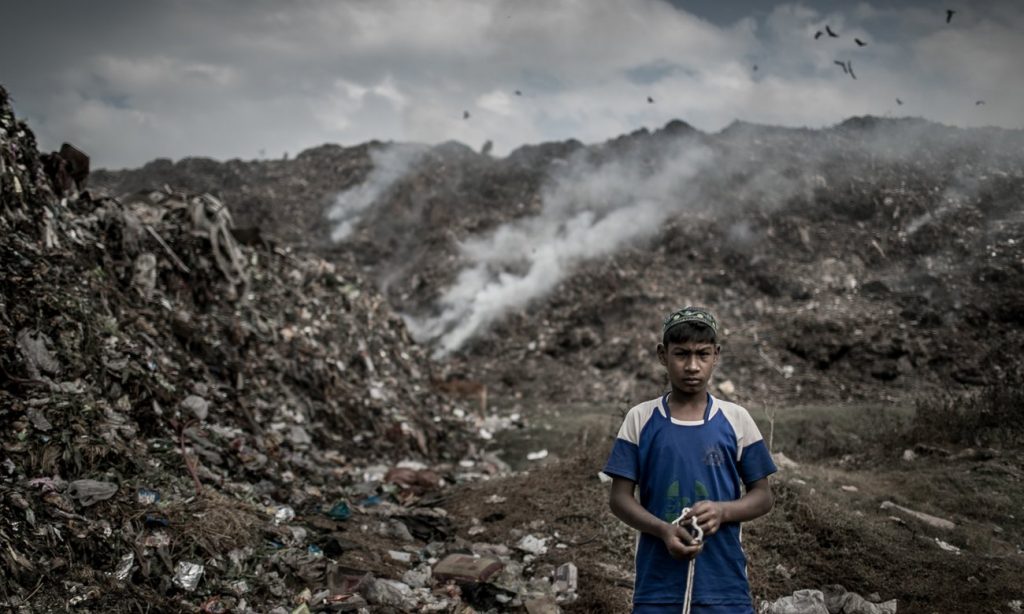From Kartik Dhara’s home, the trucks at the top of the garbage mountain look like the toys he sees city children playing with on his rounds of Kolkata. A garbage truck driver in the eastern Indian city, Dhara can’t afford to buy toys for his own children, but he often finds discarded ones where he unloads rubbish every day. “You can find everything there,” he says.
“There are dead babies, there are truckloads of smuggled chocolates or medicines that the excise department finds. I’ve even found money and gold – a lot of gold. What do I do with it? I keep it in my house. When I’m in a time of need, when there’s a big difficulty in my life, I’ll sell it and I’ll use the money.”
Dhara is one of around 30,000 people who live on and around Kolkata’s landfill site at Dhapa. Garbage collectors like Dhara clean up after the city’s 4.5 million people, and dump around four thousand metric tonnes of waste at Dhapa every day. A garbage processing industry has since sprung up on the site. In the slums at the base of the mountains of rubbish, hundreds of people make a living as ragpickers or scrap dealers, by sorting the waste and recycling. In a cremation centre on site, unidentified dead bodies – most of them corpses of hawkers or street dwellers – are burned.
Living and working on the landfill comes with serious health hazards that successive state and central governments continue to ignore. Inextinguishable fires burn all day and night, which pollute the air. They are so ubiquitous that the workers no longer complain about the fumes, and municipal authorities don’t bother to put them out.

